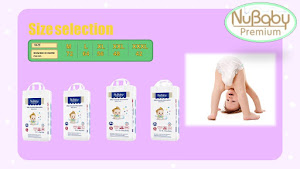5 Essential Tips for Diapering Your Newborn
New
parents spend a lot of time changing diapers — babies may use 10 diapers a day
or more!
Diapering
a new-born can be a bit challenging, especially for first-time parents.
However, with some practice and the right approach, you'll quickly become a
diapering pro. Here are five essential tips to help you through the process:
Diaper changing might seem complicated at first. But with a little practice, you'll find that keeping your baby clean and dry is easy.
Here are five essential tips
Gather Supplies
Before
you start, make sure you have all the necessary supplies within arm's reach.
You'll need clean diapers, wipes, a changing pad or clean towel, diaper cream
(if needed), and a change of clothes. Having everything ready will help you
keep one hand on your baby at all times and minimize any potential messes.
Choosing
the Right Size
Ensuring the perfect fit of your baby’s diaper is
of paramount importance to their comfort. Ill-fitting diapers can impede their
movements, cause discomfort, and result in skin irritation due to constant
friction and inadequate air circulation. Conversely, diapers that are too loose
can easily lead to leaks, leaving your baby feeling damp and uneasy.
Be Gentle and Patient
New-borns have delicate skin, so be gentle when
cleaning and diapering. Use fragrance-free wipes or plain water to clean their
bottom. Pat the area dry rather than rubbing, as this can reduce the risk of
irritation. If you're using a diaper cream, apply a thin layer to prevent
diaper rash.
Disposable Diapers
If you're using disposable diapers:
- Open
the diaper and slide it under your baby while gently lifting your little
one's legs and feet. The back part with the adhesive strips should be
about level with your baby's bellybutton.
- Bring
the front part of the diaper up between your baby's legs and onto their
belly.
- Bring
the adhesive strips around and fasten snugly. Be careful not to stick the
tape onto your baby's skin.
Hygiene Matters
Always remember to wash your hands before and after changing your baby's
diaper to prevent the spread of germs. If you're changing your baby's diaper in
a public place, use a changing pad and sanitize the area before and after use.
Diaper changes can sometimes be met with resistance from a squirmy baby.
Engage them with soothing words, gentle touches, and perhaps a soft toy or
mobile to capture their attention. Staying calm and patient will make the
process smoother for both of you.
Remember that diapering is a skill that you'll improve with time and
experience. Don't be discouraged by initial challenges. With these tips and
some practice, you'll become a diaper-changing expert in no time.
Nubaby Premium -
baby pants & diaper
Fine Quality
Excellence








Comments
Post a Comment